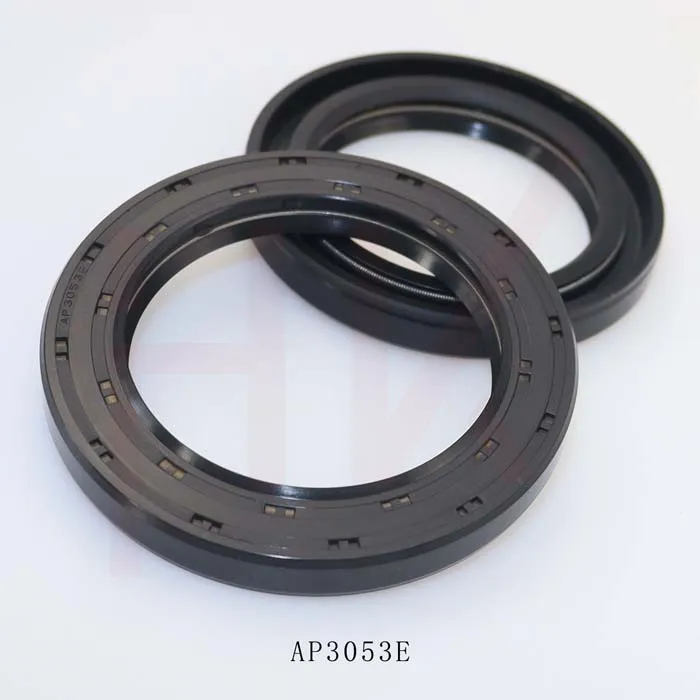Aug . 28, 2024 09:00 Back to list
Outer Hub Oil Seal - Durable and Reliable Sealing Solutions
The Importance of Outer Hub Oil Seals in Automotive Applications
In the world of automotive engineering, small components often play a crucial role in ensuring the smooth operation and longevity of a vehicle. One such component is the outer hub oil seal. Though it may seem insignificant at first glance, the outer hub oil seal is essential for maintaining the integrity of the vehicle's axle and wheel assembly. This article explores the function, importance, and maintenance of outer hub oil seals.
Function of Outer Hub Oil Seals
The primary function of an outer hub oil seal is to prevent lubricant leakage from the wheel hub assembly. These seals encase the wheel bearings, ensuring that the grease or oil used for lubrication remains within the assembly, while simultaneously keeping contaminants such as dirt, dust, and moisture out. By creating a secure barrier around the wheel hub, these seals contribute significantly to the efficient operation of the vehicle’s axle system.
Without a properly functioning outer hub oil seal, the lubricant can leak out, resulting in increased friction and wear on the bearings. This can lead to premature failure of the wheel bearings and potentially hazardous driving conditions.
Importance of Quality Outer Hub Oil Seals
Quality is paramount when it comes to outer hub oil seals. The durability and performance of these seals can vary widely depending on the materials used in their construction. High-quality seals are typically made from resilient materials such as rubber or synthetic compounds that can withstand the harsh conditions of daily driving, including temperature fluctuations and exposure to chemicals.
outer hub oil seal

Using subpar or damaged seals can result in costly repairs. A failing oil seal may lead to bearing failure, which in turn could necessitate the entire wheel hub assembly's replacement. Therefore, investing in quality outer hub oil seals is crucial for ensuring the vehicle's safety and reliability.
Maintenance and Inspection
Regular maintenance is essential to prolong the life of outer hub oil seals. During routine vehicle inspections, mechanics should check for signs of wear or damage. Common indicators include oil leaks around the wheel hub and visible cracks or deformation in the seal itself. If any issues are detected, it’s advisable to replace the seal promptly to prevent further damage to the wheel assembly.
In addition to visual inspections, keeping an eye on overall vehicle performance is important. Unusual noises or vibrations while driving can signify that the wheel bearings are not lubricated properly, which may warrant a closer inspection of the outer hub oil seals.
Conclusion
In conclusion, outer hub oil seals are a small yet vital part of a vehicle's wheel assembly. Their primary role in preventing lubricant leakage and protecting against contaminants is crucial for the longevity and efficiency of wheel bearings. Choosing high-quality seals and conducting regular maintenance can save vehicle owners from expensive repairs and ensure safe driving conditions. As automobile technology advances, the design and materials used in outer hub oil seals will continue to improve, further enhancing their performance and reliability. Ultimately, understanding the importance of these components can lead to better vehicle care and extended service life.
-
TCN Oil Seal Metal Ring Reinforcement for Heavy Machinery
NewsJul.25,2025
-
Rotary Lip Seal Spring-Loaded Design for High-Speed Applications
NewsJul.25,2025
-
Hydraulic Cylinder Seals Polyurethane Material for High-Impact Jobs
NewsJul.25,2025
-
High Pressure Oil Seal Polyurethane Coating Wear Resistance
NewsJul.25,2025
-
Dust Proof Seal Double Lip Design for Construction Equipment
NewsJul.25,2025
-
Hub Seal Polyurethane Wear Resistance in Agricultural Vehicles
NewsJul.25,2025
-
The Trans-formative Journey of Wheel Hub Oil Seals
NewsJun.06,2025
Products categories
















